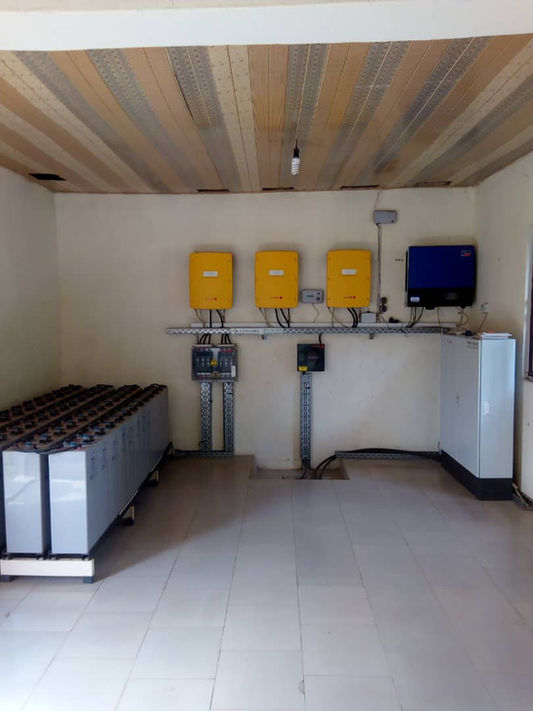Secondary School in Nigeria
Nigeria
2016
Installation of a 17 kWp Off-Grid PV Systems
Back in 2016, SOLAR23 completed a solar project in the region of southeast Nigeria, installing a 17 kWp Off-Grid PV system at St. Kizito Catholic College.
The secondary school is in the heart of Umuchima, about 600 km from Lagos, the largest economic center of Nigeria. Though the national electricity grid reaches the school’s compound, its problem is not just a matter of occasional power outages, but also that national electricity is often not available at all for many months. Due to the unreliable power supply and the lack of accessibility, St. Kizito installed a diesel generator to help keep power access available. However, the high cost of diesel and the cost of maintenance made it no longer equitable.
SOLAR23 was able to develop technology which meets the school’s requirements. The increasing number of students was taken into consideration, the classrooms, etc. We designed, delivered, and installed a 17 kWp PV off-grid system, including a battery bank to ensure an extra 2 days of power storage in the event of a photovoltaic module not operating correctly.
The PV system was designed in such a way that is now open to further expansions. The state-of-the-art system generates an output of around 26,000 kWh per year, and an energy yield of approximately 1,500 kWh/kWp.
About the school
St. Kizito Catholic College is operated according to the English school system, with English as the classroom language. The students spend a total of six years in the school, concluding with the acquisition of the WASCE (West African School Certificate of Education) and SSCE (Senior Secondary Certificate of Education). Both correspond to the English GCE (General Certificate of Education) O-Level and qualify one for admission into tertiary educational institutions (University, Polytechnics etc.).
The residential school has presently 42 tutors and almost 400 students between 10 and 18 years of age. It comprises an area of about 190.000 square meters (half of which is still undeveloped bush) and consists of 12 major buildings. It is planned to increase the school’s capacity to 500 students and 50 teachers after the reconstruction of two obsolete buildings.






























